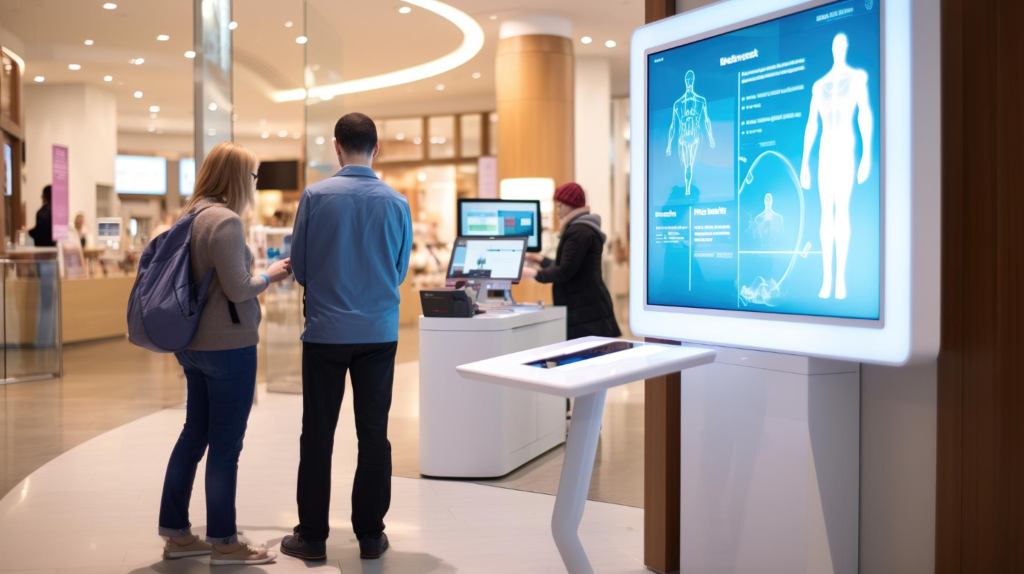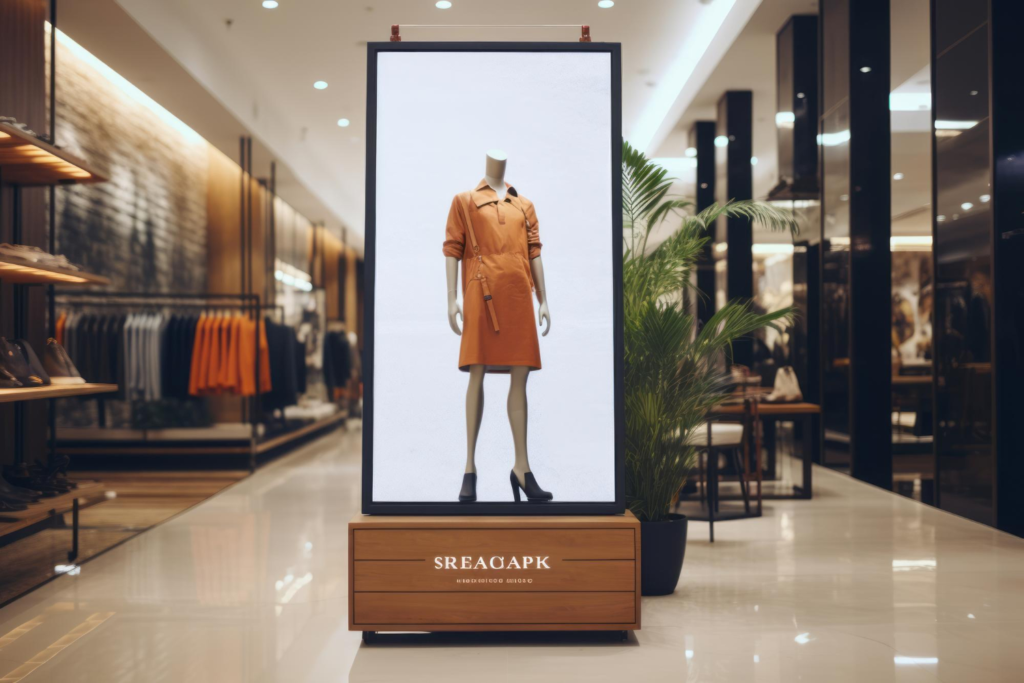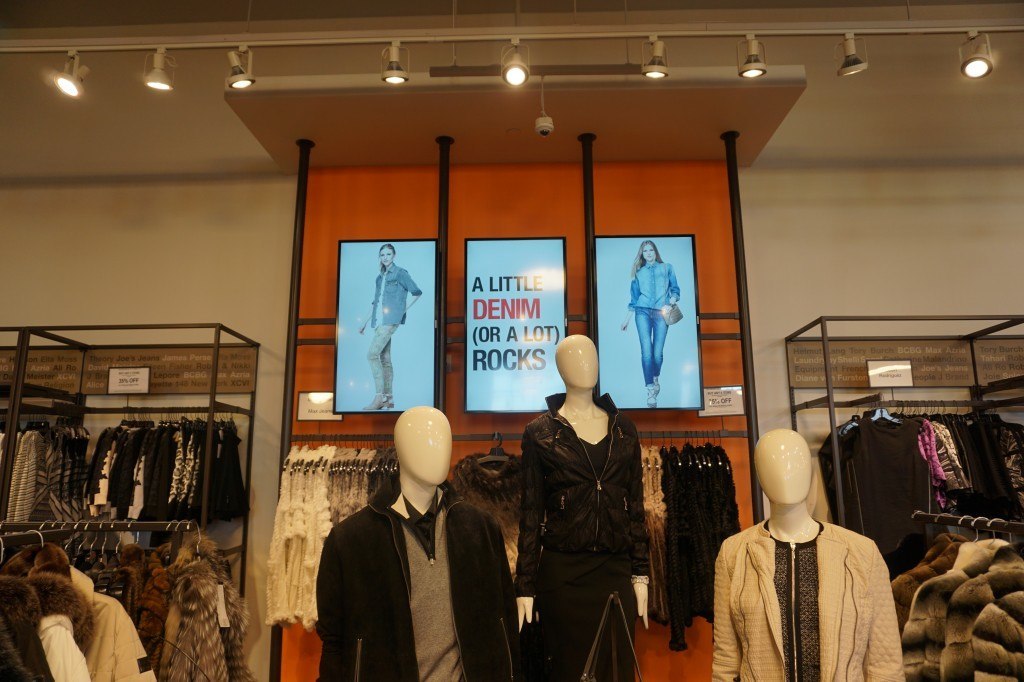In the bustling retail landscape, the strategic use of digital screens isn’t only a trend; it’s a game-changer. Retail screens have evolved from mere advertising tools to pivotal elements in creating immersive customer experiences. But how exactly do they drive success in retail stores? This isn’t about flashy tech or gimmicks; it’s about smart, strategic implementation that resonates with customers.
- Maximizing Visibility: Leveraging screen placement for optimal impact.
- Engaging Content: Crafting messages that captivate and connect.
- Interactive Experiences: Turning passive viewing into active engagement.
- Real-Time Updates: Keeping content fresh and relevant.
- Targeted Advertising: Tailoring messages to specific audiences.
- Measuring Impact: Using analytics to refine strategies.
This isn’t about screens; it’s about transforming how customers interact with your brand. Ready to see how? Let’s explore the strategic use of retail screens and unlock their full potential.
Maximizing Visibility with Retail Screens
When it comes to retail, visibility is king. It’s not about having digital screens; it’s about placing them where they’ll make the biggest impact. Think of your store as a stage and your screens as the spotlight. Here’s how to ensure your screens don’t display content, but command attention.
- Strategic Placement: Location, location, location. It’s a real estate mantra that holds true for digital screens. Place screens at eye level in high-traffic areas. Consider the customer journey through your store – where do they pause, browse, or make decisions? That’s where your screens should be.
- Size and Orientation Matters: Bigger isn’t always better. Match the screen size and orientation to the space and content. Vertical screens work well in narrow aisles, while wider screens suit expansive wall spaces. It’s about complementing, not overwhelming, the shopping environment.
- Lighting and Visibility: Lighting plays a crucial role. Too much glare and your content is lost. Too dim, and it lacks impact. Balance natural and store lighting to ensure screens are easily viewable at all times of the day.
- Dynamic Content: Static images or text are passé. Dynamic content grabs attention. Use motion graphics, video content, or even interactive elements to make your screens stand out. Remember, the goal is to catch the eye, not to distract from the shopping experience.
- Consistency in Branding: Your screens are an extension of your brand. Ensure that the content reflects your brand’s style, tone, and message. Consistency builds recognition and trust with your customers.
- Testing and Tweaking: Finally, don’t sit and forget. Monitor how customers interact with your screens. Test different content and placements to see what works best. It’s a continuous process of tweaking and improving.
By maximizing the visibility of your retail screens, you’re not showing content; you’re enhancing the customer experience and, ultimately, driving sales. Remember, it’s not what you show; it’s how you show it that counts.
Engaging Content: Captivating Your Audience
Engaging content on retail screens is the linchpin of customer engagement. It’s not about displaying information; it’s about creating a narrative that resonates with your audience. This section delves into the art of crafting content that not only attracts attention but also encourages interaction and enhances the shopping experience.
Understanding Your Audience
To create content that engages, you first need to understand your audience. Who are they? What are their interests, needs, and pain points? Tailoring your content to reflect the demographics, preferences, and behaviors of your target audience is crucial.
For instance, a store catering to young adults might use vibrant, trendy visuals and slang, while a luxury brand might opt for elegant, minimalist designs and sophisticated language. It’s also important to consider the cultural and regional aspects that might influence customer preferences and behaviors.
In this endeavor, CrownTV’s range of integrated apps plays a pivotal role. These apps extend the functionality of your in-store digital signage, allowing you to connect with your audience in innovative ways. Whether it’s showcasing up-to-date local weather, integrating social media feeds like Instagram and Twitter, or displaying real-time news headlines, these apps make your digital screens more than just display tools; they become dynamic platforms for engagement.
Crafting a Compelling Message
Once you understand your audience, focus on the message. What do you want to communicate? Your content should be clear, concise, and compelling. It should tell a story that aligns with your brand and resonates with your customers. This could be anything from promotional offers and product information to brand stories and customer testimonials.
The key is to present this information in a way that is not only informative but also emotionally appealing. Use powerful visuals, persuasive copy, and a strong call to action to encourage customer interaction and drive sales.
Utilizing Advanced Content Technologies
Leverage the latest technologies to make your content more engaging. Augmented reality (AR), for example, can transform a static advertisement into an interactive experience. Imagine a customer pointing their smartphone at a screen and seeing a product come to life in 3D.
Interactive touchscreens can also be used to provide personalized recommendations, and product information, and even facilitate impulse purchases. Additionally, incorporating elements like social media feeds, live updates, and user-generated content can keep your screens fresh and relevant.
In this context, CrownTV’s dashboard emerges as a pivotal tool. It streamlines the management of your best digital signage solution in retail operations, allowing for seamless content updates and real-time device monitoring. This comprehensive solution empowers retailers to not only display engaging content but also to analyze its impact with insightful analytics.
Measuring and Analyzing Engagement
Finally, it’s crucial to measure the effectiveness of your content. Use analytics tools to track metrics such as view time, interaction rates, and conversion rates. This data can provide valuable insights into what content resonates with your audience and what doesn’t.
It can also help you understand customer behavior and preferences, allowing you to refine your content strategy over time. Continuously analyzing and adapting your content based on these insights ensures that your screens remain an effective tool to entice customers and drive sales.
Engaging content is not about what you show; it’s about how you show it. By understanding your audience, crafting compelling messages, utilizing advanced technologies, and continuously measuring engagement, you can create content that not only captures attention but also enhances the overall shopping experience.
Interactive Experiences

In retail, interactivity is the secret ingredient that transforms ordinary shopping into a memorable journey. Digital screens in retail settings are not about broadcasting content; they’re about creating a dialogue with the customer.
Interactive digital screens in retail stores are more than flashy digital displays; they’re powerful tools for engagement. Imagine a customer walking past a screen that responds to their presence, perhaps changing content based on their direction of movement or even the time of day. This level of interaction isn’t only engaging; it creates a unique, personalized shopping experience. Customers feel recognized and valued, and this emotional connection can significantly influence their purchasing decisions.
Moreover, interactive screens can serve as virtual assistants. They can provide product information, answer queries, or even guide customers through the store. This not only enhances customer satisfaction and experience but also bridges the gap between online and offline shopping.
In an era where convenience is king, providing customers with an easy, informative, and interactive shopping experience can set a retail store apart from its competitors. By leveraging the power of interactive digital screens, retailers can create a dynamic, engaging environment that not only attracts customers but also encourages them to return.
Real-Time Updates
In today’s fast-paced retail environment, staying current is not an advantage; it’s a necessity. Digital signage in retail stores offers a dynamic platform for real-time updates, ensuring that the content is as fresh and relevant as the latest trends. This section explores the transformative power of real-time updates on digital screens and how they can be leveraged to keep content timely, relevant, and engaging for customers.
- Keeping Content Fresh: The beauty of digital screens lies in their ability to update content instantly. Gone are the days of static posters and outdated promotions. With digital screens, retailers can showcase the latest offers, flash sales, or new arrivals in real-time. This constant refresh not only keeps the content relevant but also encourages repeat visits from customers eager to see what’s new.
- Syncing with Online Channels: In an era where online and offline experiences are increasingly intertwined, digital signage screens offer a seamless way to sync content across all platforms. Promotions running on your website or social media can be instantly mirrored on your in-store screens. This consistency ensures that customers receive the same message, whether they’re shopping online or in-store, creating a cohesive brand experience.
- Leveraging Data for Personalization: Real-time updates go beyond just displaying new content; they can be tailored based on customer data and behavior. Imagine screens or digital signs that change content based on the time of day, weather, or even the demographics of the shoppers currently in the store. This level of personalization not only enhances the customer experience but also increases the relevance and effectiveness of the content displayed.
By harnessing the power of real-time updates, retailers can ensure that their digital screens are not only informative but also a dynamic and integral part of the customer’s shopping experience. This adaptability not only keeps content fresh but also makes it more relevant and engaging, ultimately driving sales and customer loyalty.
Targeted Advertising: A Game-Changer in Retail
In the digital age, advertising is not about reaching an audience; it’s about reaching the right audience. Targeted advertising through digital screens in retail is revolutionizing how we connect with customers. Let’s break down how this sophisticated approach can turbocharge your marketing campaigns and skyrocket customer engagement.
Personalized Messages that Hit the Mark
- Data-Driven Insights: Dive into customer data like purchase history and demographics.
- Customized Ads: Tailor ads to specific customer segments. Imagine a sports apparel store showcasing running shoes to fitness buffs.
- Increased Relevance and Conversion: Ads that resonate with customers’ interests and needs are more likely to turn browsers into buyers.
Real-Time Strategy Adjustments
- Agile Advertising: Notice an ad underperforming? Switch it up on the fly!
- Stay Ahead of Trends: Adapt to the ever-changing retail landscape in real-time.
- Optimized Impact: Keep your marketing efforts sharp, relevant, and effective.
Targeted advertising on digital screens isn’t about flashing offers; it’s about creating a dialogue with your customer, understanding their needs, and responding in real-time. This approach doesn’t capture attention; it captivates, engages, and converts. Welcome to the future of retail marketing, where every ad is an opportunity to connect and every screen is a portal to your customer’s desires.
Measuring Impact

Understanding the effectiveness of your digital screen strategy is crucial. It’s not about displaying content; it’s about measuring its impact on your audience and business. Let’s get into the key aspects of measuring the impact of digital screens in retail environments, providing insights into how retailers can gauge success and optimize their strategies for maximum effectiveness.
Analyzing Customer Engagement
Delving deeper into customer engagement, it’s essential to consider not the quantity, but the quality of interactions. Advanced analytics tools go beyond basic metrics, offering insights into behavioral patterns and engagement levels. For instance, heat mapping technology can reveal which areas of the screen draw the most attention, while dwell time analysis shows how long customers stay engaged with specific content.
This data can be cross-referenced with demographic information, providing a layered understanding of different audience segments. Also, tracking the response to interactive elements, like QR code scans or touchscreen interactions, offers a direct measure of engagement and interest.
By analyzing these diverse data points, retailers can tailor their content to match customer preferences, making each interaction more impactful and meaningful.
Sales Correlation
Expanding on the concept of sales correlation, it’s important to recognize the nuances in how different content influences customer behavior. For instance, a time-limited promotion might create an immediate spike in sales, while educational content about a product could lead to a gradual increase in purchases over time.
Retailers can also experiment with A/B testing, displaying different content at different times or locations to see which resonates more effectively with their audience. Furthermore, integrating screen content data with customer loyalty programs can provide a more comprehensive view of how digital signage system influences long-term customer behavior and preferences.
This holistic approach allows retailers to not only measure the immediate impact of their content but also understand its long-term effects on customer loyalty and brand perception.
In this context, the role of CrownTV’s media player becomes crucial. This player, designed exclusively by CrownTV, ensures that your content is displayed consistently and without interruptions, even in the absence of an internet connection. With advanced hardware including a six-core CPU and a quad-core GPU, they are capable of running demanding content smoothly.
Customer Feedback and Surveys
When it comes to customer feedback and surveys, the key is to engage customers in a way that feels natural and unobtrusive. Interactive polls or surveys integrated directly into the digital screens can provide immediate and relevant feedback. Retailers can also leverage social media platforms to encourage customers to share their experiences and thoughts about the in-store digital content.
This approach not only provides valuable insights but also fosters a sense of community and customer involvement. Moreover, analyzing customer service interactions and online reviews can offer indirect feedback about the digital screens’ effectiveness.
By combining direct customer feedback with these indirect sources of information, retailers can gain a comprehensive understanding of their audience’s perceptions and experiences, leading to more customer-centric content strategies.
Case Study: Revolutionizing Retail with Digital Screens

In a groundbreaking move, Last Call by Neiman Marcus partnered with the software vendor to test the impact of digital screens in a retail environment. This experiment, conducted in one of their stores, focused on three key product categories: dresses, shoes, and handbags. The setup included three sets of three digital signage displays strategically placed in these sections. The goal was to collect and analyze data on sales impacts and customer traffic, supplemented by feedback from sales associates and customers.
Insights and Results
The experiment yielded fascinating results. For dresses and shoes, there was a noticeable increase in conversion rates. Customers were drawn to the merchandise featured on the screens, leading to higher engagement, trying on products, and ultimately, purchases. However, the initial results for handbags were different.
Despite the digital advertising, handbag conversions initially declined. This was attributed to the limited exposure of handbags in the advertising content – only three out of fifteen clips featured them.
Strategic Adjustments and Success
The key takeaway from this initial phase was the critical importance of aligning in-store inventory with digital advertising content. When customers saw specific products on the screens, they actively sought them out in the store. For instance, a particular dress that was featured on the screen and had below-average sales previously, sold out quickly after being advertised.
Responding to these insights, Last Call and Scala adjusted their strategy. They aligned digital content more closely with store inventory and increased the frequency of handbag advertisements. This led to a significant positive impact.
In a subsequent iteration of the pilot, not only did handbag sales see a 30% increase, but dresses and shoes continued to show elevated sales as well. Customers often purchased the specific items they saw in the digital ads immediately.
This case study underscores the transformative power of digital screens in retail when used strategically. It highlights the importance of content relevance, real-time adaptability, and the alignment of digital marketing with physical inventory. By embracing these principles, retailers can significantly enhance customer engagement and sales performance.
Conclusion: Transform Your Retail Space with Smart Digital Signage
Navigating the world of retail digital signage might seem daunting, but the rewards are undeniable. From maximizing visibility to creating interactive experiences, the strategic use of digital screens can redefine the retail experience.
Let’s recap the key takeaways:
- Strategic Screen Placement: It’s all about location.
- Engaging and Dynamic Content: Keep it fresh and relevant.
- Interactive Experiences: Engage customers on a new level.
- Real-Time Updates: Stay current and connected.
- Targeted Advertising: Speak directly to your audience.
- Measuring Impact: Track, analyze, and adapt.
Incorporating digital signage technology into your retail strategy should be as smooth as the customer experience you aim to provide. That’s where CrownTV’s White Glove Experience comes in. Imagine a service that not only understands your unique business needs but also meticulously plans and executes your digital signage project from start to finish. With CrownTV, you get personalized consultation, comprehensive planning, seamless project management, and expert installation.
Every aspect of your digital signage solutions is handled with precision and care, ensuring that your screens are not just installed but optimized for maximum impact and engagement. Transform your retail space with CrownTV, where sophistication meets simplicity.
